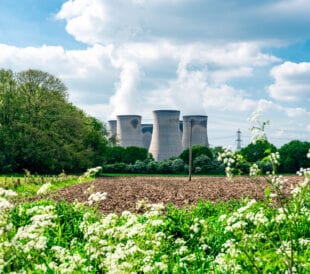Decarbonization is an essential approach to greenhouse gas mitigation across all industrial sectors. Unfortunately, some greenhouse gases are much harder to abate than others. Heavy industries like cement, chemical, and steel manufacturing pose unique challenges owing to their inherent process emissions, high-temperature requirements, long investment cycles, and so on. Achieving meaningful emissions reductions in these sectors seems nigh impossible when these issues are coupled with a lack of scalable alternatives. However, carbon capture, utilization, and storage (CCUS) has emerged as a promising decarbonization approach for hard-to-abate sectors.
Monitoring CO2 across stages of industrial production is essential to meaningful mitigation. Firstly, monitoring provides a means for identifying any leaks and ensuring successful containment. This is enables the verification of long-term containment and permanence, helps maintain safety standards, and ultimately contributes to regulatory compliance. Secondly, proper monitoring enables composition analysis for ongoing quality assurance (QA) of the CCUS project. Impurities in CO2, for example, can cause acidic conditions that could corrode pipeline infrastructure. The overall effectiveness of CCUS processes depends on high-purity CO2. Thus, analysis and monitoring of CO2 directly impacts CCUS utilization efficiency in various end-use cases.
How FTIR Factors into CCUS
Fourier transform infrared (FTIR) spectroscopy is often considered the gold standard for process monitoring and control. It provides non-intrusive, quantitative analysis with high temporal resolution. This enables real-time in situ monitoring of CO2 levels and other species during CCUS processes. FTIR spectroscopy is valuable not only for its effectiveness in detecting and measuring impurities in captured CO2 but for its ability to measure various impurities in captured CO2, including NOx, SOx, hydrocarbons, ammonia, moisture, and carbon monoxide. Importantly, FTIR’s real-time data capabilities allow for continuous assessments of CO2 capture systems, which allows operators to keep emissions within safe and acceptable limits at all times.
FTIR offers several advantages for CO2 monitoring:
- Continuous Monitoring: FTIR provides real-time, uninterrupted measurement of CO2 and impurities, ensuring safety and environmental standards compliance.
- High Sensitivity: The technique can detect trace levels of impurities such as sulfur oxides (SOx) and nitrogen oxides (NOx), which are crucial for maintaining the integrity of CO2 pipelines and storage facilities.
- Low Maintenance: As a non-contact technology, FTIR requires minimal maintenance and reduces operational disruptions.
- Specificity: FTIR offers precise, interference-free measurements essential for accurate CO2 purity analysis.
Real-World Applications of FTIR in CCUS
CCUS is critical for clean power generation, and it can be a particularly effective means to greenhouse gas reduction in hard-to-abate sectors. When combined with bioenergy or direct air capture, it can achieve negative emissions, which is essential to reach net-zero targets. Efforts are focused on scaling and commercializing CCUS to lower costs and boost adoption, with significant investments from governments and private entities. Additionally, CCUS facilitates low-carbon hydrogen production, further aiding the development of a hydrogen economy. FTIR spectroscopy is central to this approach.
FTIR is employed to analyze and monitor CO2 purity, signaling when impurity levels are approaching dangerous thresholds. Such a signal prompts necessary adjustments or even outright halting of CO2 emissions production. FTIR’s precision and reliability make it a preferred tool for professionals and researchers. Its capability to provide direct, accurate measurements of CO2 and its impurities enhances the trustworthiness of CO2 purity analysis.
By ensuring the purity of captured CO2, FTIR technology supports the safety, compliance, and efficiency of CCUS operations. This plays a crucial role in the global effort to reduce greenhouse gas emissions and combat climate change. As the need for sustainable industrial production grows, precise CO2 analysis and monitoring become increasingly important.
Additional Resources
- Fourier transform infrared (FTIR) spectroscopy online academy
- Instruments for Carbon Dioxide (CO2) Analysis & Monitoring for Carbon Capture, Utilization & Storage (CCUS)
- MAX-iR FTIR Gas Analyzer






Leave a Reply